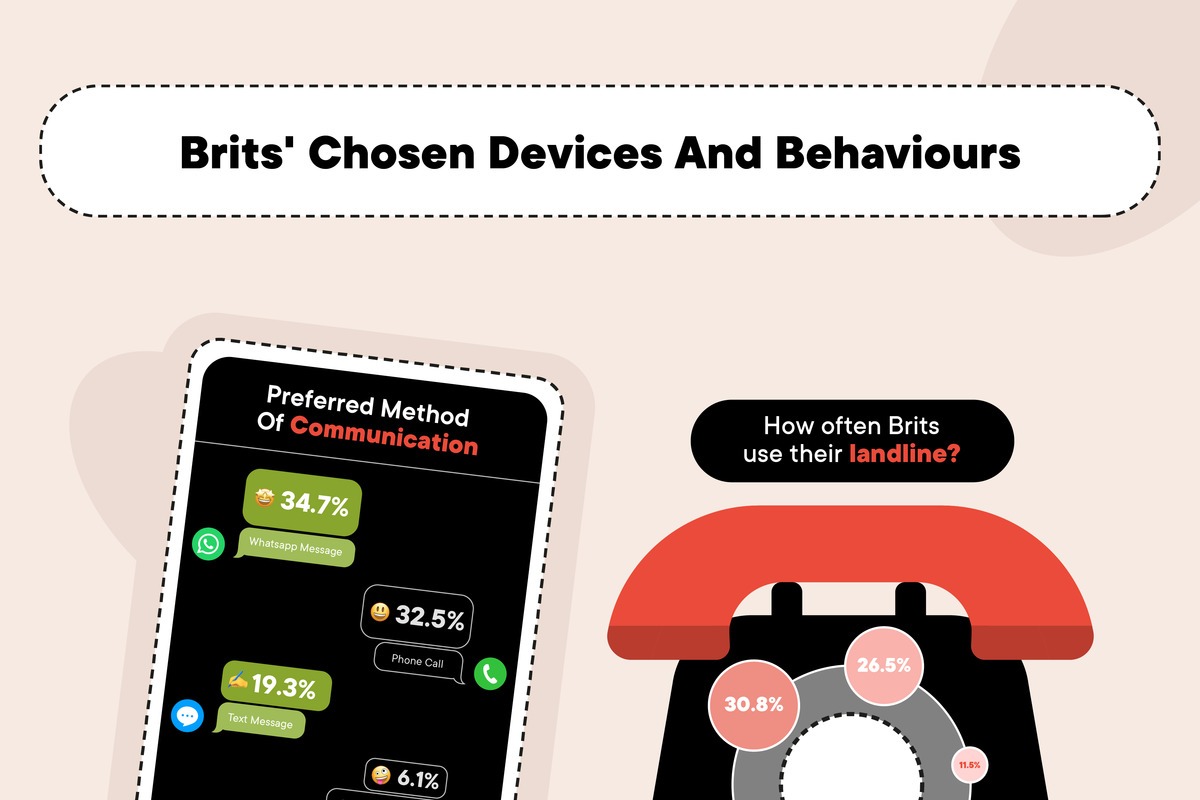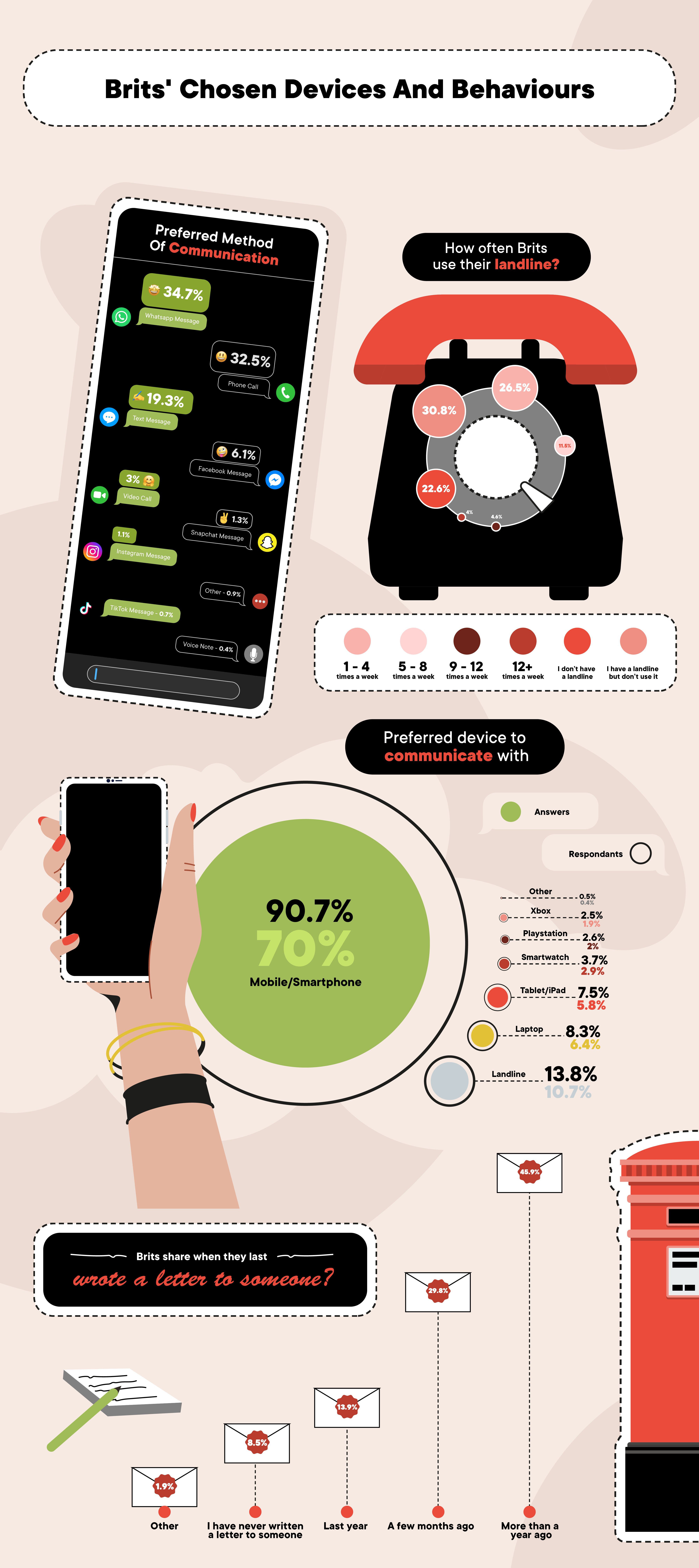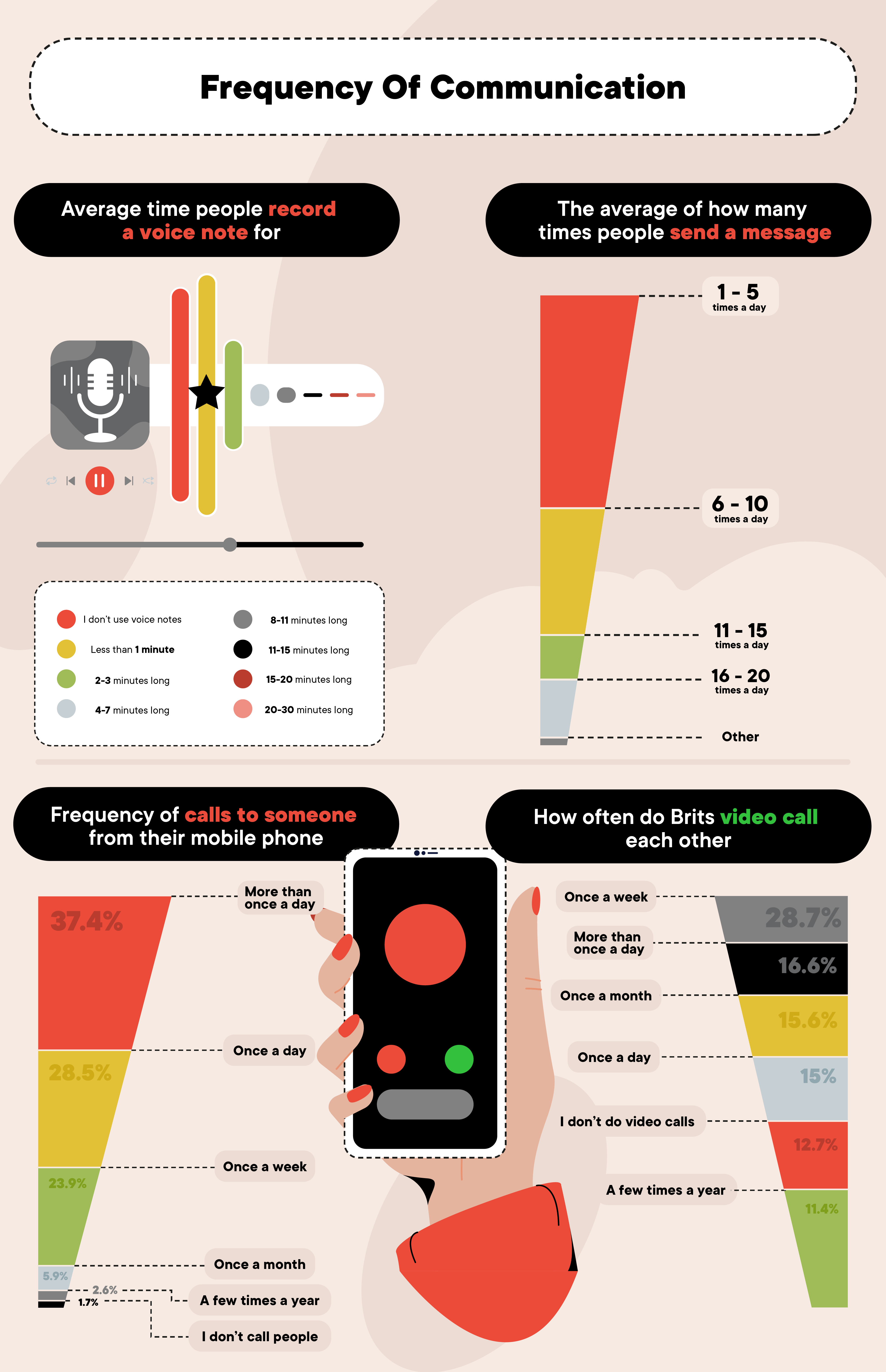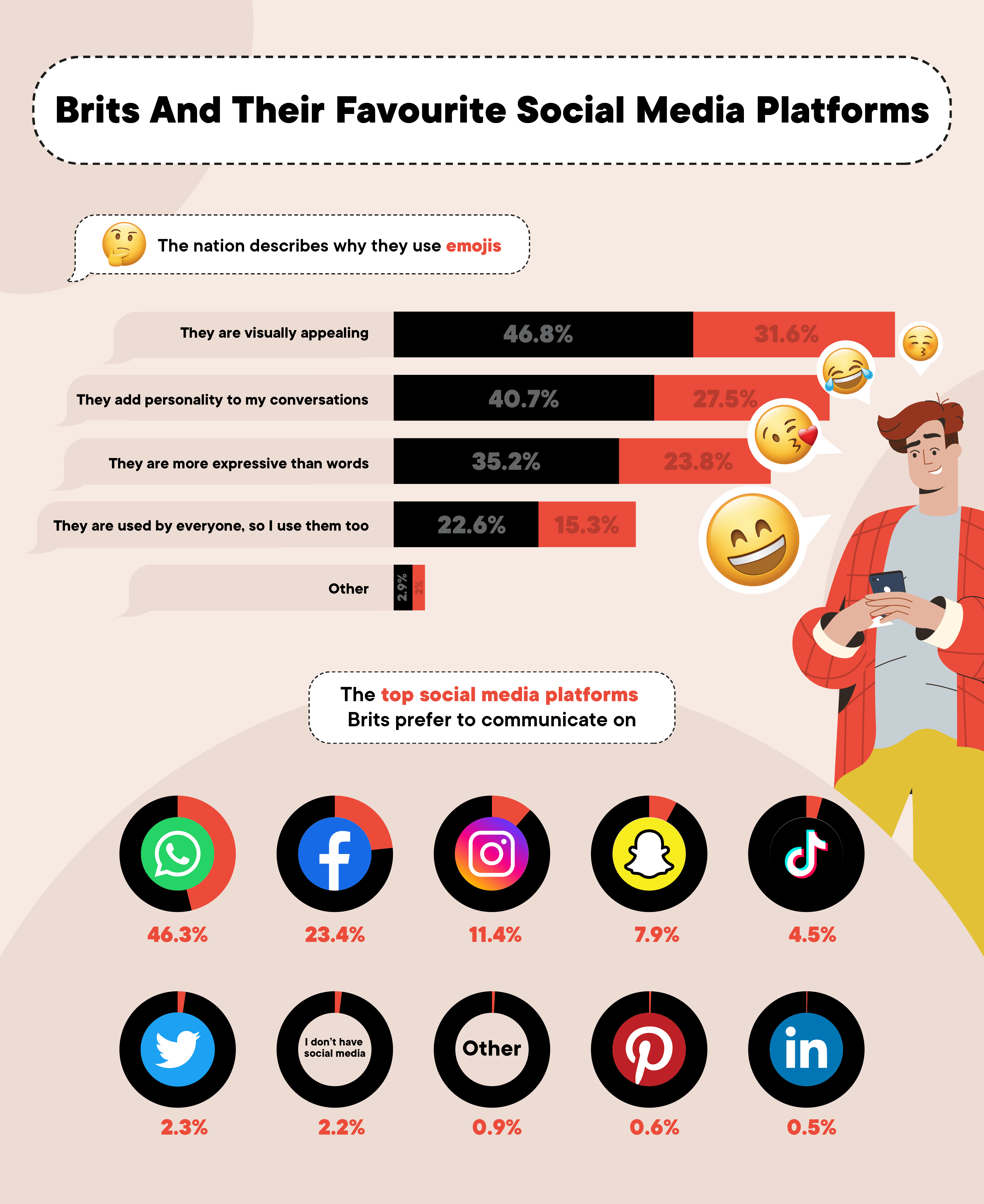In our ever-changing world, consumers expect a lot more from their customer...
Read more
 Published on 14th February 2023 by Gemma Harding
Published on 14th February 2023 by Gemma Harding
From the smoke signals and cave paintings of early humans to the smartphones and messaging apps of today, the ways in which we communicate are constantly evolving. This is reflected by the increasingly multi-channel approach businesses have when it comes to customer service, including in regards to call handling. As well as being contactable by phone, many organisations are making themselves available on platforms ranging from social media channels to live chat.
For our latest campaign, we decided to take a deep dive into people’s communication habits. To do this, we polled 1,000 UK adults to ask about everything from the devices Brits are using to their preferred social media platforms. Here’s what we discovered…
After the invention of the telephone in the 19th century, landlines gradually became a staple of homes and offices in many parts of the world. But to what extent has this technology been eclipsed by smartphones?
Landlines certainly aren’t the dominant force they used to be when it comes to communication, but they are still a popular way of keeping in touch. Over a quarter of the people we polled (26.5%) said they use their landlines between one and four times a week, while 11.5% stated they use them five to eight times per week. A further 4.6% use these devices between nine and 12 times every week, while 4% reported communicating by landline more than 12 times a week. On the flip side, 30.8% of respondents said that while they have a landline, they don’t use it, and 22.6% revealed they don’t have a landline.
Mobile phones were by far the most popular communication devices among the people we surveyed. More than nine in 10 respondents (90.7%) said this was their preferred technology, with landlines lagging behind at 13.8%, followed by laptops at 8.3% and tablets at 7.5%.
Messaging platform WhatsApp was identified as people’s favourite way of keeping in touch, with 34.7% of people saying this was their preferred method of communication – marginally beating phone calls at 32.5% and significantly ahead of text messages at 19.3%. However, older respondents still slightly favoured phone calls. Among the over 54s, phone calls were the most popular communication method (chosen by 34%). Interestingly, phone calls also took the top spot among the 18-24s, with 43.4% of people in this age group saying they preferred calls.
Letters may not be as popular as they once were, but that doesn’t mean they’ve entirely fallen out of favour. While 45.9% of those we surveyed said it is over a year since they last put pen to paper, nearly a third (29.8%) had sent a letter within the last few months. It’s worth noting however that 8.5% of people had never written a letter, and among 18 to 25-year-olds, this figure was 19.4%.

Having multiple different messaging tools at our disposal, from texts to apps like Snapchat and WhatsApp, may encourage us to communicate more frequently – and our survey results support this idea. Nearly half of those we polled said they message people between one and five times per day, while 28.2% message six to 10 times a day. A further 9.9% message 11 to 15 times daily, while an even more eager 12.9% message 16 to 20 times.
Mobile phones also make it easier than ever to call people, so it’s no surprise that nearly two-fifths of respondents (37.4%) said they call people on their mobiles more than once a day. Nearly a third (28.5%) call from their mobiles an average of once a day, while 23.9% make calls on these devices once a week. Only 1.7% said they don’t make calls on a mobile phone.
Of course, it’s not just voice calls that people can make these days. Nearly one in three of those we surveyed (28.7%) said they video call people once a week, while 15% stated they make these calls once a day and 16.6% noted they video call more than once every day.
Voice notes are increasingly popular too – but when people send these messages, how long do they tend to speak for? Around two-fifths (39.3%) of the people we surveyed said the voice notes they leave tend to be less than one minute long, while 17.9% leave messages between two and three minutes long. This way of communicating isn’t for everyone though, with 34.9% of people saying they don’t use voice notes.

The most popular social media platform for people to communicate on was WhatsApp, with 46.3% of people identifying it as their preferred choice. This was followed by Facebook at 23.4%, Instagram at 11.4%, Snapchat at 7.9% and TikTok at 4.5%.
There were however differences between the age groups when it came to the popularity of the platforms. Whereas 56.3% of the over 54s identified WhatsApp as their preferred choice (the highest of any age group), only 14.7% of 18-24s said it was their favourite. Among 18 to 24s, Snapchat was the preferred option, with 38% saying they favour it.
Social media and texting more generally isn’t just helping to shape the channels we communicate on, but also the language we use. As well as changing words and phrases into easy-to-type abbreviations, we’re also increasingly using everything from emojis to GIFs and memes to showcase our emotions.
We asked our survey respondents why they reach for emojis when messaging. Nearly half (46.8%) said they like these emoticons because they’re visually appealing, while 40.7% said they add personality to their conversations. Over a third (35.2%) thought emojis are more expressive than words, while 22.6% revealed they were simply going with the flow and using them because other people do.

Phone calls undeniably remain a powerful tool of communication, not least when it comes to delivering responsive customer service. Highlighting this, 23.3% of people we polled said they feel that phone calls are more personable than other methods of communication. And when asked if they think phone calls are dead, 71.3% said they disagree.
Only 11.8% of people said they wouldn’t care if we no longer had the ability to make phone calls, while 8% said they would feel indifferent and 4% suggested they would be happy. This compared with 35.3% who stated they would feel sad if they couldn’t make phone calls, 27.2% who said they would be frustrated and 13.7% who said they would feel worried.
On the whole, people seem content with the fact that there are now multiple ways to communicate. Over half of those polled (53%) said they were happy about this. However, nearly a third (30.4%) believed there are now too many forms of communication.
Despite the variety of communication channels on offer, over 65% of the people we surveyed said they don’t keep in touch with friends and family enough. This figure was highest in those aged 25-34. Nearly nine in 10 people in this age group (88.7%) felt they didn’t stay in touch as much as they should.
While many people clearly like the extra convenience of modern forms of communication, it appears there is a certain nostalgia for more traditional methods. When asked how they would feel about older approaches making a comeback, such as postcards, letters and landlines, 40.9% of respondents said they would like to see this happen.

Our research clearly shows the increasing importance of new forms of communication, but it also reveals that many people like having the option of more traditional ways of keeping in touch. This has major implications for businesses when it comes to customer service. People want to be able to get in touch with companies quickly, easily and – crucially – via channels that suit them.
For many organisations, customer service outsourcing is the obvious solution to help them meet consumer expectations. Covering everything from call answering and order taking to live chat tools, this approach helps to ensure companies are available to consumers when and where they need them – and all without draining internal resources.
How do you feel about how changes in communication are affecting businesses? Join the conversation using #EvolutionCommunication.